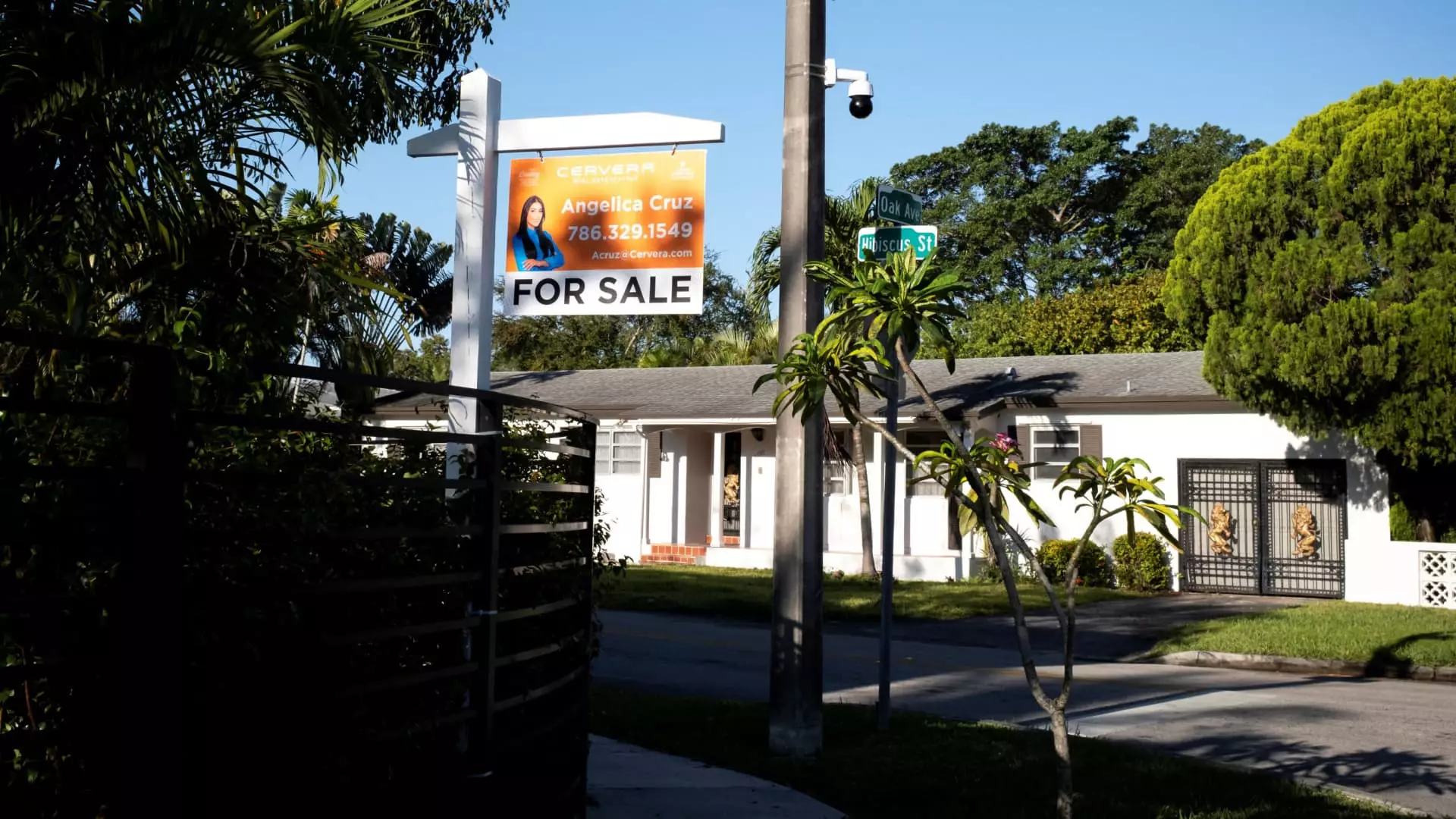As we step into the spring of 2024, the housing market is grappling with an alarming reality: skyrocketing mortgage rates are crippling potential homebuyers. In March, the sale of previously owned homes plummeted by 5.9% from February, culminating in a disheartening total of 4.02 million units sold on a seasonally adjusted basis. This notably marks the most sluggish pace for March since the economic downturn of 2009. The ramifications of high mortgage rates extending beyond mere statistics—young families and first-time buyers are feeling the sting, unable to break into a market that increasingly favors entrenched homeowners and investors. As much as some may argue that home ownership is the cornerstone of the American Dream, the current terrain portrays a nightmare for many.
The average rate on a 30-year fixed mortgage hovered over 7% for much of early 2024, triggering reluctance among prospective buyers. The belief that home prices would dip, allowing for better entry points, has evaporated as economic and affordability concerns mount. Consequently, with uncertainty shadowing the market, the dream of homeownership morphs into an illusion for a considerable portion of the population.
Regional Disparities Exposed
A closer look at the data reveals stark disparities across the United States, particularly with the West experiencing the most pronounced plunge in home sales. The region, often associated with inflated pricing, witnessed a considerable downturn of over 9%. While it is essential to acknowledge that the Rocky Mountain states have shown resilience, fostering job growth and containing a slight uptick in year-over-year sales, the overarching picture remains bleak. Across the board, home sales have declined—a troubling indicator of the broader economic malaise gripping various communities.
This lack of sales activity raises pressing questions regarding economic mobility. Lawrence Yun, the chief economist for the National Association of Realtors, articulates apprehensions about the dire implications of stalled residential housing mobility. The stagnation within the housing market signifies a looming threat not just to potential buyers but to the economic fabric of society itself. As fewer people can afford to buy homes, communities stagnate, and economic vitality diminishes, inevitably impacting job growth and innovation.
Inventory Overload Meets Cooling Prices
Conversely, the market is seeing an influx of available listings, with a staggering increase of nearly 20% in housing inventory since March 2023. Yet, even with this expansion, sales have weakened, triggering a concerning shift in pricing dynamics. The median price of an existing home hit an all-time high of $403,700 in March—an impressive figure yet accompanied by a disturbing 2.7% annual increase that reflects a worrying trend. This figure underscores the reality that prices have been stagnating since December 2023, and as supply continues to outweigh demand, the anticipated cooling of prices may be on the horizon. This spells disaster for many who were counting on home equity as an avenue to financial stability.
It’s worth noting the complex relationship between the real estate market and household wealth. The Federal Reserve reports that residential real estate valuation has soared to $52 trillion. While this figure seems optimistic and signifies climbing wealth for entrenched homeowners, it further alienates first-time buyers who are already battling against unreachable entry points. As household wealth in real estate rises, the American dream of homeownership for many turns into a mirage, exacerbating income inequality.
The Prospects for First-Time Buyers
First-time buyers have continued to struggle, comprising only 32% of the market—down from historical norms of around 40%. Meanwhile, all-cash transactions, a preferred method for investors, account for a quarter of sales, representing a formidable barrier for those reliant on traditional financing. The marginal decline in all-cash sales suggests coordinated efforts among investors, maintaining their positions in this tumultuous economy. As first-time buyers remain sidelined, the dream of owning a home slips further away, prompting skepticism about future opportunities.
With foreboding signs ahead—rising inventory levels and an increase in canceled contracts—April 2024 could reveal more pessimism than March. As characterized by Robert Frick from Navy Federal Credit Union, the current figures are lackluster, and the prospect of worsening conditions looms large in the background. The combination of high financial barriers, regional disparities, and stagnant prices beckons a critical analysis of real estate’s role in society, where accessibility and economic mobility appear to be slipping further from reach.


Leave a Reply